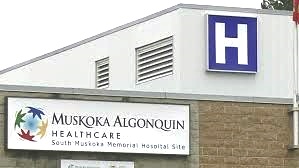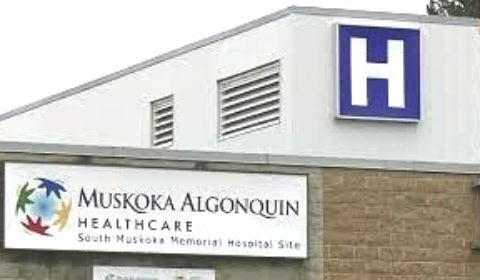MAHC tries to defend itself with Q&A
MUSKOKA — Confused about the hospital situation in Muskoka?

Join the crowd.
There’s a lot of talk on both sides of the issue.
The towns of Bracebridge and Huntsville have been outspoken and controversial in their opinions.
And public opinion has even gotten personal on social media forcing the MAHC board to issue a defence of their CEO.
Huntsville is toying with the issue of calling for the MAHC board and CEO to resign.
Many politicians and public wonder why a decision is taking so long.
They want to know whether there will be one super hospital in Port Sydney (as rumoured) or the existing two sites with shared services.
And why is a decision taking so long.
So, what about it?
The town officials are clear and many vocal residents.
Here’s a MAHC release in its defence:
Muskoka Algonquin Healthcare (MAHC) has developed a Q&A that has been posted on the MAHC website to respond to questions raised and to clarify and correct statements made at a future planning public consultation meeting earlier this month. Through the generous support of YourTV community television, coverage of the meeting continues to be available through the YourTv website atwww.yourtv.tv/muskoka until March 31, 2018.
The key issues and concerns that were reinforced to the task force at the public meeting included access to emergency care, travel distances, and a desire to maintain the status quo in Muskoka no matter the cost.
“We know there is concern and disquiet in the community mainly around the One Hospital model and questions as to why MAHC would continue researching a model that is opposed by a number of people,” explains Natalie Bubela, Chief Executive Officer. “MAHC has repeatedly asked the Ministry of Health and Long-Term Care for direction and whether any model can be taken off the table and the Ministry has directed us to continue to explore all three models.”
Meanwhile the 25-member Capital Plan Development Task Force continues to review data and analyze the various options, and is considering all feedback received about future hospital care when developing and evaluating the models and recommending a preferred model to the MAHC Board of Directors. All feedback has been welcome and shared, including the 16 public delegations on March 1 and more than 100 written submissions received.
“I can assure you the task force members who will make a recommendation to the Board are listening to the community,” says task force Chair Cameron Renwick. “It is important to remember that any plan for the future will focus on providing safe, high-quality, sustainable hospital care. No matter what model is selected, it will be expensive and there is a Ministry requirement that the community contribute 10% of the building cost as well as the equipment and furnishings, so definitely community support is a critical factor. Most importantly, we want everyone to know that no final decisions about a preferred future model have been made.”
While standards or ministry guidelines on travel distances don’t exist, and distances to emergency departments vary across the province, certainly travel distance is important. The task force is committed to doing all it can to seek solutions that minimize concerns around access, Renwick adds.
MAHC’s financial challenges have also been repeatedly mentioned throughout the planning process, and some of these are the result of the provincial funding formula. MAHC continues to work with the North Simcoe Muskoka LHIN, the Ministry and the Ontario Hospital Association to ensure these challenges are addressed.
“But this is about more than just money,” says Bubela. “Even if all of our current and anticipated financial challenges were addressed, it would not solve all of the sustainability issues we are trying to address in the future model, such as our existing physical infrastructure, recruitment and retention of specialty providers, small volumes, duplication and standardization challenges.”
Each of the models being explored has advantages and disadvantages and will require weighing several factors and compromise. MAHC’s goal is to develop a plan that everyone can get behind, and select a model that will provide safe, high-quality, sustainable hospital care for future generations.
Visionary planning of this magnitude takes years to complete and gets more refined at each of the five stages. In the meantime, the existing hospital sites will continue to be here for our residents, cottagers and visitors for years to come, adds Bubela.
“MAHC has to plan today for what the future might look like 15 to 20 years down the road because our buildings keep getting older and medical equipment will continually need to be replaced to keep pace with new technology,” says Bubela. “Both sites require significant investments and have millions in capital needs today that we rely on community donations to fund. The future is important and needs to be planned for, but supporting our current needs is equally important.”
